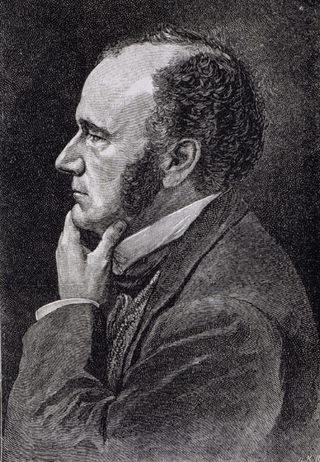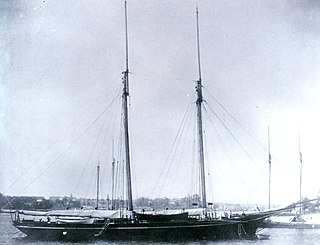Baton Rouge is the capital city of the U.S. state of Louisiana.

Carlile Pollock Patterson was the fourth superintendent of the United States Coast and Geodetic Survey. He was born in Bay St. Louis, Mississippi, the son of Commodore Daniel Todd Patterson. He was appointed a midshipman in the United States Navy in 1830. He studied Civil Engineering at Georgetown College, graduating in 1838, and returned to the Navy, assigned to work with the U.S. Coast Survey. He left the Navy in 1853 and captained mail steamers in the Pacific Ocean. In 1861, as a civilian, he was appointed as Hydrographic Inspector of the U.S. Coast Survey. In 1874, he was made Superintendent of the U.S. Coast Survey, a position he held until his death. In 1880, he was elected as a member to the American Philosophical Society.

George Davidson was a geodesist, astronomer, geographer, surveyor and engineer in the United States.

The United States Coast and Geodetic Survey, known from 1807 to 1836 as the Survey of the Coast and from 1836 until 1878 as the United States Coast Survey, was the first scientific agency of the United States Government. It existed from 1807 to 1970, and throughout its history was responsible for mapping and charting the coast of the United States, and later the coasts of U.S. territories. In 1871, it gained the additional responsibility of surveying the interior of the United States and geodesy became a more important part of its work, leading to it being renamed the U.S. Coast and Geodetic Survey in 1878.

USC&GS Thomas R. Gedney, originally USCS Thomas R. Gedney, was a survey ship in service in the United States Coast Survey from 1875 to 1878 and in the United States Coast and Geodetic Survey from 1878 to 1915.
USC&GS Arago was the name of two ships of the United States Coast Survey and the United States Coast and Geodetic Survey, and may refer to:
USC&GS Arago was a steamer that served as a survey ship in the United States Coast Survey from 1871 to 1878 and in the United States Coast and Geodetic Survey from 1878 to 1890. She was the second ship of the Coast Survey or Coast and Geodetic Survey to bear the name.
USCS, later USC&GS, Barataria was a steamer that served as a survey ship in the United States Coast Survey from 1867 to 1878 and in the United States Coast and Geodetic Survey from 1878 to 1885.

USC&GS Yukon was a schooner that served as a survey ship in the United States Coast Survey from 1873 to 1878 and in its successor agency, the United States Coast and Geodetic Survey, from 1878 to 1894. She was the pioneering Coast Survey ship in many of the waters of the Territory of Alaska, including the Bering Sea and the western Aleutian Islands, and she also operated extensively in California and Washington. She later entered commercial service as Elwood and was wrecked in 1895.
USC&GS Yukon was the name of more than one United States Coast Survey or United States Coast and Geodetic Survey ship, and may refer to:

USC&GS Eagre was a survey ship of the U.S. Coast and Geodetic Survey, originally the yacht Mohawk, which later served in the United States Navy as USS Eagre.
USC&GS Fathomer was the name of two United States Coast and Geodetic Survey ships, and may refer to:
USCS, later USC&GS, Fathomer was a steamer that served as a survey ship in the United States Coast Survey from 1871 to 1878 and in the United States Coast and Geodetic Survey from 1878 to 1881. She was the only Coast Survey and first Coast and Geodetic Survey ship of the name.

The first USC&GS McArthur, originally USCS McArthur, was a steamer that served as a survey ship in the United States Coast Survey from 1876 to 1878 and in the United States Coast and Geodetic Survey from 1878 to 1915.
USC&GS McArthur was the name of two United States Coast and Geodetic Survey ships, and may refer to:
USCS Varina was a schooner that served as a survey ship in the United States Coast Survey, a predecessor of the United States Coast and Geodetic Survey, from 1854 to 1875.

USC&GS George S. Blake, in service 1874–1905, is, with the U.S. Fish Commission steamer Albatross, one of only two US oceanographic vessels with her name inscribed in the façade of the Oceanographic Museum, Monaco due to her being "the most innovative oceanographic vessel of the Nineteenth Century" with development of deep ocean exploration through introduction of steel cable for sounding, dredging and deep anchoring and data collection for the "first truly modern bathymetric map of a deep sea area."

USC&GS A. D. Bache (1871–1900), the second steamer of the U.S. Coast and Geodetic Survey, was named for the former superintendent Alexander Dallas Bache and launched August 1871 at Wilmington, Delaware.

USS PCS-1450, ex-PC-1450, was a United States Navy minesweeper in commission from 1944 to 1946. She saw service in the latter stages of World War II.









